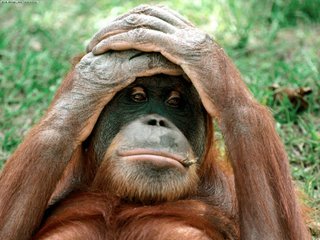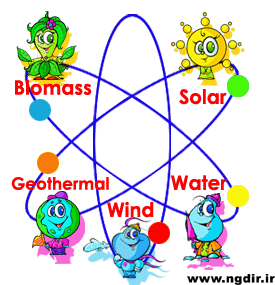Smart crows

University of Auckland, New Zealand: Embargoed for release: 16-
For a long time humans were believed to be the only living things that used tools. Animals weren't thought to be smart enough. But then scientists found chimps using rocks to crack nuts. They saw gorillas testing water depth with a stick before stepping in. They observed orangutans slipping twigs into fruit to get seeds.
Great apes might not put up shelves in the study or a fence in the garden. But they can make and use tools in hundreds of different ways -
This is not too surprising, really, since chimps, gorillas and orangutans are our closest living relatives. But birds are pretty bird-
Well as a matter of fact they do. Scientists have known for some time that New Caledonian crows don't just use complex tools to get food -
The findings appear in the online Current Biology on August 16. The researchers who did the work are at the University of Auckland, New Zealand.
The birds' skills in the use of tools, say the researchers, rival those seen in the great apes. What's more, it seems that the birds may have solved their problem using something called analogical reasoning.
This is a much more advanced type of thinking than simple trial and error. A person using it -
Analogical reasoning is why humans are so inventive, right from their earliest use of stone tools. It is what drives human innovation. It is the "hallmark of human intelligence", says Russell Gray of the University of Auckland. (It is also a rich source of humour.)
Both the great apes and the New Caledonian crows may be using analogical reasoning, says Gray. This may explain why "out of all the crow species in the world, only these crows routinely make and use tools."
In the study, the researchers presented crows with meat in a hole. A stick was available but it wasn't long enough to reach the meat. The birds needed to get a long stick out of a "toolbox" to get the meat from the hole.
There was another catch. The long stick was also out of reach. The creative thing the crows did was to use the short stick to get the long one out of the box, said Alex Taylor, also of the University of Auckland.
"They could then use the long stick to get the meat."
In a second experiment, the researchers reversed the positions of the two sticks. The small stick was now inside the toolbox while the long stick was handy. The crows briefly probed the box containing the short stick using the long stick. But they quickly corrected their mistake and took the long stick straight to the hole to get the meat.
These were hard problems for the crows, especially the first one, Gray said. "It was surprising to find that these 'bird-
Six out of seven crows tried to get the long stick with the short stick at their first try at solving the problem.
"To do this, they had to inhibit their normal response of trying to get the food directly with the short stick and realize that they could use the short stick to get the long stick."
So let's hear no more about birds being bird-
###
Taylor et al.: "Spontaneous Metatool Use by New Caledonian Crows." Publishing in Current Biology 17, 1-
More help with words
ancestor
breed
comparing
fertile
orangutans
particular
What's it all about?
- Animals used to be thought to be not smart enough to do something. What was that?
- Give one piece of evidence we now have that shows this was wrong.
- Why is it not too surprising that great apes use tools?
- What other living things use tools and make them?
- What type of thinking have these been found to use?
- In which country do the scientists work who have done the research reported in this story?
- What word does the writer use to say that the crows are about as skilful as the great apes in their use of tools?
- When people use analogical reasoning they borrow an idea from a situation they have -
- - before, to help them work out what to do in a new situation. - This seems to be what great apes do sometimes and what the New Caledonian crows did in this experiment. Are the scientists sure the crows used analogical reasoning?
- Which word in the article gives you the answer to the last question? The word is used twice in the paragraph that begins "Both the great apes and the New Caledonian crows ..."
- In the experiment the crows were trying to get meat out of a hole using a stick. But the stick they could use wasn't -
- - - enough to reach the meat. - What was the creative thing the crows did with this short stick?
- Try to explain in one sentence what the scientists mean when they say that this was creative.
- After the crows had learned to use the short stick to reach the long one, the scientists swapped the sticks around. Can you think why they did this second experiment?
- In one sentence how does an animal or a person use trial and error to solve a problem?
- In one sentence how does an animal or a person use analogical reasoning to solve a problem?
- Why do the scientists believe the crows used analogical reasoning rather than trial and error to solve their problem?
- Imagine you are these scientists. Can you think of a question you would still like to answer about these crows, and the way they solve problems?
- How could you try to answer that question?
More science teaching resources for this story
Topic for discussion, research or pupil presentations
Students should watch the 12-
The following is simply one possible discussion topic. Teachers of science will be able to think of a host of others.
The video is accessible equally to committed science students and to those whose interest in science is more cursory or even non-
This accessibility, as can be seen from the feedback, gives rise to strong criticism from a scientist who self-
There is nothing self-
“I'd *much* rather watch a segment about hard science than a fluff piece that would better be presented in "People" magazine. My time is valuable and I really don't care whether or not Mr. Jarvis knows ballet and thinks that birds' brain parts should have a different name.”
The exchanges between Grumpy and someone who calls himself Kaba are rather heated, quite entertaining and very instructive. Students should read as much or as little of this as they feel like. Then working in groups they should try to boil down into one sentence what each of the disputants is saying.
They should then, by discussion among themselves, try to reach consensus about which of the two positions they most agree with – and why.
Tips for science class discussions and groupwork
No 58
I am a recent convert of cooperative learning. I attended a 3-
1. YOU must set up the groups, not the students. If you don´t know your students very well, look at their past grade history and ensure that you mix them as much as possible. putting all the As with the As only ensures that they will perform best, or might fight over the lead role all the time.
2. Keep the groups consistent. I am doing my groups every week on Fridays as a way to get this going very strongly. Don´t change the people in the group unless it is absolutely sure that the group cannot work together.
3. Don´t look at it as something additional. Be ready to change your lecture. As you move on with groups, the idea will be that the students are doing better at understanding the concepts and you won´t need to lecture as much on the topics covered.
4. Don´t think you can do something else, while they are on the assignment. One thing becomes very clear, you need to be a real facilitator, we are talking about teenagers after all and you need to keep track of time and keep everyone on task.
If you want to know more, don´t hesitate to contact me. To find out more about POGIL specifically for Chemistry teachers, go to: http://www.pogil.org
Extract from a contribution to an online forum of the National Science Teachers Association, by James Smith, AP Chemistry and General Chemistry, Perth Amboy High School, USA


